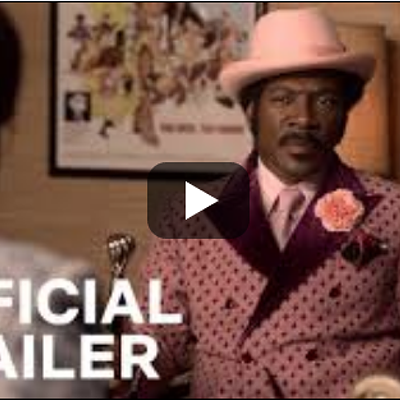Before the Farrelly brothers did gross, before Madonna did slutty, before gay was chic and before fat was fabulous, Waters tapped into all of these pre-nascent motifs and created a cinema of sleaze so ahead of its time that it is now almost completely dated.
For those recluses and anencephalics who haven't seen Waters' films, he is the genius behind Pink Flamingos, Female Trouble, Desperate Living and Polyester.
These works, focusing on the truly unpleasant sex lives of America's greatest treasure (i.e. poverty-ridden perverts), made him the high priest of disgusting indie cinema. I really cannot recommend strongly enough that everyone go out and watch Desperate Living, if only for the scene in which the rabies-infected lesbians devour the body of a hideously deformed, obese, leather-wearing queen in front of her submissive, gay-male slaves. This is, indeed, the crowning moment of the liberties that we enjoy as beneficiaries of the fruits of Western culture.
Waters' latest outing, A Dirty Shame, is his first film to receive the dreaded NC-17 rating, but it really comes off as a Walt Disney musical fantasy, especially when compared to his horrifying early works.
Dirty Shame tells the story of a section of Baltimore that is being overrun by sex addicts. Into their midst comes Ray Ray, a savior of sex whose Christ-like powers of healing orgasm lead the faithful into a rapture so far beyond what the Bible promises that it makes Dante's Paradiso seem like a story about getting diarrhea in a two-bit Mexican flop house.
What really sets Dirty Shame apart, though, is not the appearance of naked "bears" (i.e. heavy, hairy gay men and their heavy, hairy, gay male lovers), nor the grossly exaggerated breasts of sex addict Caprice Stickles (played by the surprisingly small-busted Selma Blair with the aid of an artificial set of what William Butler Yeats once described as "great bubbly jubblies"), nor the swingers and dirt fetishists and on-screen depiction of scrapple cooking, but rather its uplifting and naively optimistic tone.
Indeed of the usual Waters formula of horrible, mean, filthy people getting more horrible, mean and filthy, this is the tale of wonderful, kind, filthy people becoming, if not more wonderful and kind, at least a little filthier. It is, in short, a story of religious liberation, as Sylvia Stickles (the dreaded Tracey Ullman) goes from being a sexual neuter to a non-stop slut factory due to a concussion.
It seems that in the alternate universe imagined by Waters, any blow to the head leads one to an overwhelming desire for other kinds of blows, and thus an army of cranially injured sex addicts is born.
But they must fight to overcome the resisting force of the "neuters," those who think that sex is dirty and wrong and should not be performed in public places by diapered police officers and female food fetishists. These evil neuters form a potent force for oppression, and only the power of Ray Ray and his 12 apostles of orgasm can hope to free the minds and minges of the world from their frigid grasp.
Waters is known for the B-movie weirdness of his actors' performances, but in recent years, he's had to move away from his traditional troupe of amateurs because of their untimely deaths. Thus, his films now include actual stars, or sort-of-stars, like Johnny Knoxville as Ray Ray, Chris Isaak as Vaughn Stickles, and the aforementioned Ullman as Vaughn's wife, Sylvia.
Unfortunately, these people don't always seem weird, but rather seem to be acting weird. This is especially true for Ullman, who looks like she's doing a sketch-comedy parody of the acting styles that earlier Water's performers did so naturally.
Isaak isn't so bad, and Selma Blair actually completely gets the concept, but her part, unlike her character's chest, is a bit undersized. I'm not sure what to make of Knoxville: He's clearly not an actor, which is good, but he doesn't quite know what to do in his role, and seems like a high-school drama student doing a decent job in his first play. In keeping with Waters' aesthetic, it'd be better if he'd seemed like a high-school drama student doing an unbelievably atrocious job in his first play.
Oh well; you can't have it all. In the end, Dirty Shame will probably be considered one of Waters' minor works. Perhaps Waters' attempt to be shocking through the depiction of perverted sex just doesn't make sense in a world in which kiddie pop stars routinely depict perverted sex in their stage shows.
Waters succeeds best when he's not focused on content, but on form. He returns here to a low-budget style that really shines, utilizing stock footage, super-titles and some incredibly cheesy homemade special effects to indicate altered mental states. I wish more filmmakers would choose creativity over easy and expensive technology, but I guess that's unlikely. Even Waters succumbs a bit to the sleazy come-ons of high-tech here, inserting a CGI squirrel into his otherwise delightfully low-end film.
Nonetheless, there are flashes of greatness here, just not enough to make this a work to compare to Waters' masterpieces. While I can't really recommend A Dirty Shame, I can say that I am truly glad Waters is still out there making trash that is art, rather than the standard Hollywood move of making trash that's really just trash.













